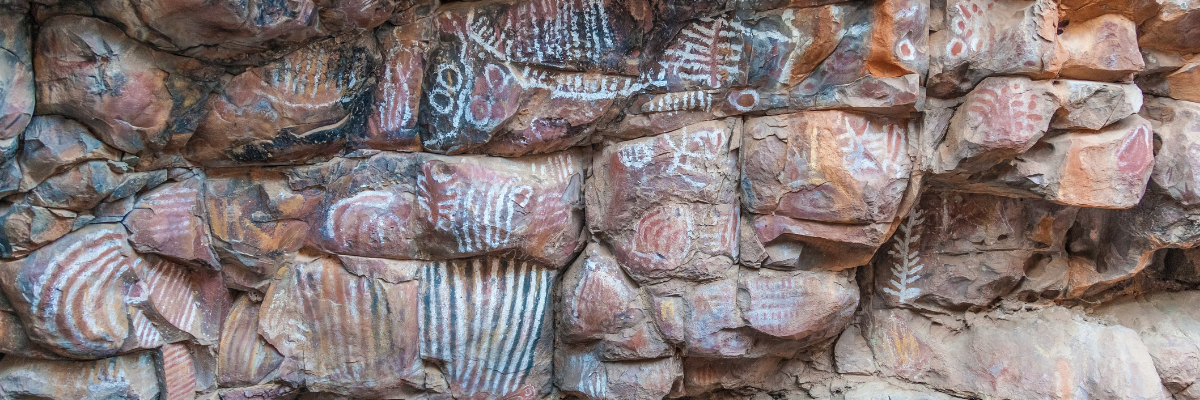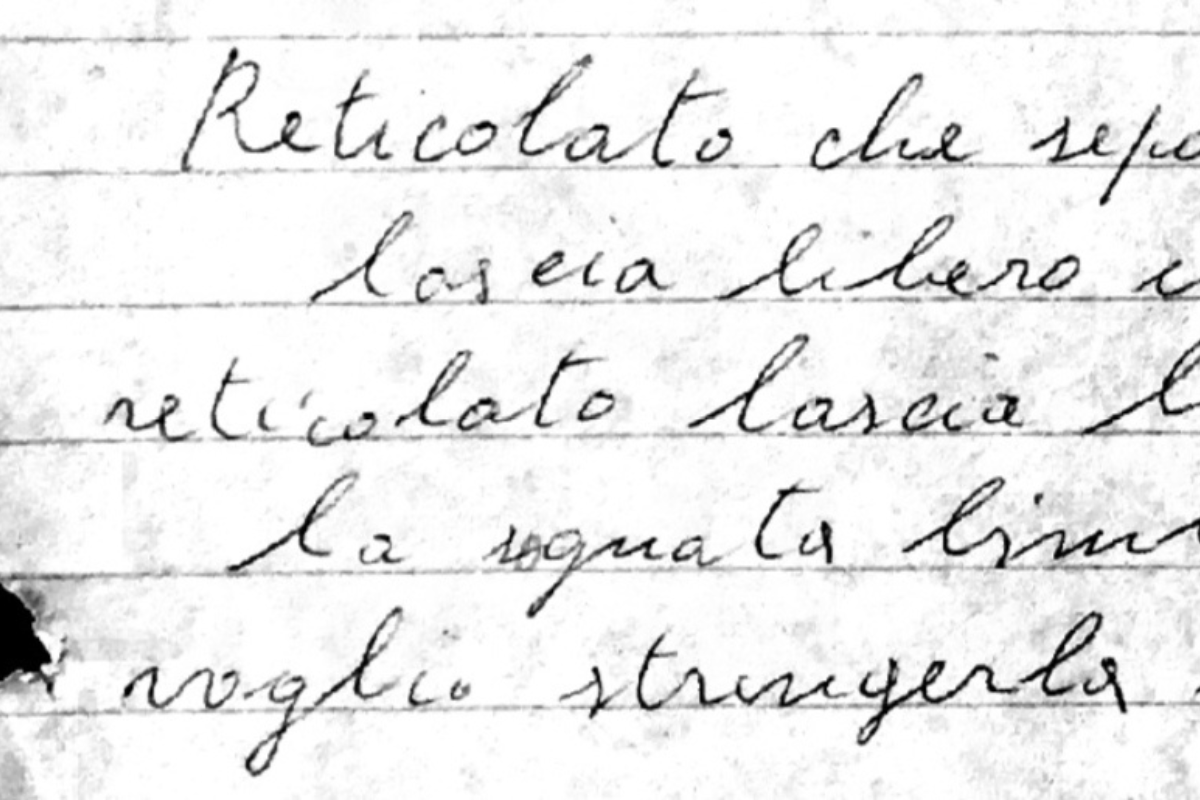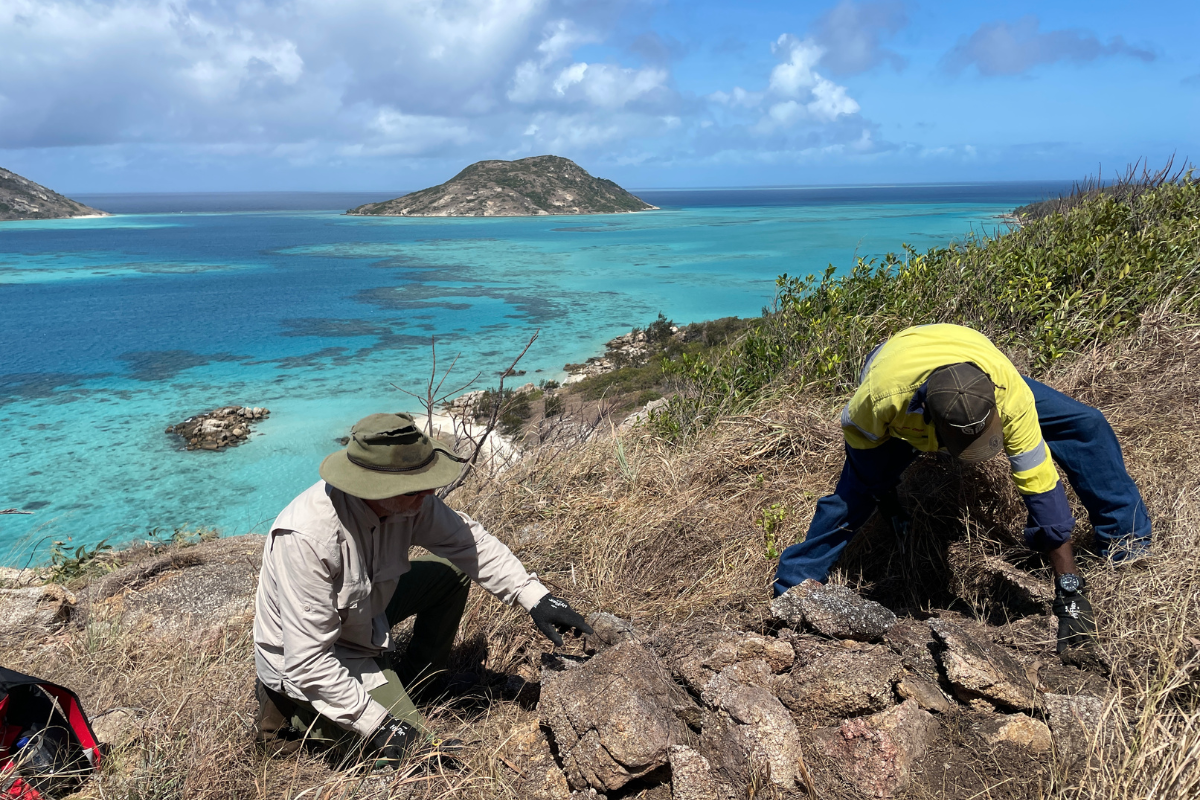
Shifting perceptions
Artistic expression has played an important role in First Nations people’s lives and cultures for tens of thousands of years: from paintings and engravings on rock walls, through to ceremonial sand and body art, bark paintings, decorated spears and boomerangs, and canvases that reflect stories of Country and culture.
Until the mid-twentieth century, however, these works were largely regarded by non-Indigenous Australians as having ethnographic rather than artistic interest and value. Thanks to the energy and determination of the artists themselves, to far-sighted curators and gallerists, and the work of anthropologists and art historians, Aboriginal and Torres Strait Islander art is now critically acclaimed at home and internationally. It has also undergone a renaissance which has transformed contemporary Australian art.
Three mid-twentieth-century exhibitions played a key role in shifting perceptions. Anthropologists Ronald and Catherine Berndt showed a collection of Arnhem Land works at the Art Gallery of Western Australia in 1957, while ethnologist Charles Mountford curated an Arnhem Land show at the Art Gallery of South Australia in 1960. The Art Gallery of New South Wales’s Tony Tuckson assembled an ambitious exhibition of bark paintings, carvings and artefacts which toured in 1960 and 1961.
Making movements, creating community
In the early 1970s, a new and dynamic movement took shape in the Western Desert community of Papunya, where senior men including Clifford Possum Tjapaltjarri – encouraged by a young art teacher, Geoffrey Bardon – used acrylic paints to depict ancient stories of land and law on board and canvas.
The movement spread across central Australia, with scores of communities developing their own distinctive and evolving styles, and also turning to printmaking, ceramics, fibre art and photography. Supported by the all-Indigenous Aboriginal Arts Board, established by the Whitlam government in 1973, artists set up community-owned and -operated art centres, which still provide livelihoods for thousands of remote Indigenous Australians.
During the 1980s, state institutions slowly started to acquire desert paintings, and a new market and industry emerged. Specialist galleries sprouted. The Third Biennale of Sydney in 1979 featured works by artists from Ramingining, in East Arnhem Land. Kimberley artist Rover Thomas and Adelaide-based Trevor Nickolls represented Australia at the 1990 Venice Biennale.
Urban artists came to prominence in the 1980s, although they initially struggled to be recognised. Ten urban artists, Bronwyn Bancroft, Euphemia Bostock, Brenda L Croft, Fiona Foley, Fernanda Martins, Arone Raymond Meeks, Tracey Moffat, Avril Quaill, Michael Riley and Jeffrey Samuels founded Boomalli Aboriginal Artists Co-operative in Sydney, creating often politically charged works relating to racism, dispossession, resistance, persistence and survival.
In 1994 and 1995, a major exhibition of Boomalli art, True Colours, toured internationally. In the same period a large exhibition of Aboriginal art called Aratjara: Art of the First Australians (Aratjara means messenger) toured Germany, England and Denmark. The exhibition, which represented over one hundred Aboriginal artists, was the initiative of activists Gary Foley and Charles (Chicka) Dixon and artist Lin Onus. Curator Djon Mundine suggests that “Aratjara may well be the only exhibition of its kind initiated and controlled by Aboriginal people.”
Also significant in this period, was Fiona Foley’s and Djon Mundine’s co-curated Tyerabowbarwarryaou – I shall never become a whiteman for the Havana Biennale in 1994.
Curatorial interventions
Indigenous curators such as Brenda L Croft, Djon Mundine and Hetti Perkins, helped to raise Aboriginal art’s profile. Most curatorial positions at state and territory galleries are now held by First Nations experts, and Indigenous works are winning prestigious art prizes, such as the 2020 Archibald Prize, awarded to Vincent Namatjira. The diversity of contemporary Aboriginal art is showcased at annual art fairs and competitions.
Thanks to experts such as Wally Caruana, Howard Morphy and Andrew Sayers, Australian art history has been rewritten. Sayers crafted his 2001 book Australian Art around both Aboriginal and European art, revealing the interaction between them while Morphy’s Aboriginal Art (1998) covers its full range of forms from its beginnings to the present and discusses what it reveals about the world of the people who produced it.
Ian McLean described twentieth-century Indigenous art as “perhaps the greatest significant cultural achievement of Australia’s post-white settlement history”, and as having “changed the ways in which both Australian and contemporary art are conceptualised”. Similarly, James Mollison (Director of the National Gallery of Australia 1977–1989) suggested that the “Aboriginal art achievement is the great art achievement in Australia to date”.
This new flourishing of Indigenous art has not been without its controversies, from the unscrupulous practices of certain art dealers exploiting artists, to cultural theft and appropriation, and the emergence of fake Aboriginal art.
But there is little doubt now about the stature and importance of Aboriginal art, and its central place within wider Australian culture. It is found in public places and design shops, and adorns Qantas planes. It has become part of Australia’s image, at home and overseas. Exhibition curators and art historians have played a crucial role in bringing it to national and international attention.
Through Aboriginal art, non-Indigenous Australians have gained a deeper knowledge of Indigenous culture and the Australian landscape, as well as of the trauma of colonisation and the burden of unfinished business of reconciliation. For the artists, it is a source of economic independence and a statement of culture and survival.



